IN REVIEW: Lyric’s open-hearted ‘Onegin’ strikes to the core of the work’s humanity
The Lyric Opera’s handsome production of Tchaikovsky’s Eugene Onegin hit home partly because of its simplicity. The spare approach both to design and to direction, and the unfussy singing that managed to avoid excess (even as non-Russian-speakers labored to sing in Russian), allowed us to focus so intently on the drama that we found ourselves contemplating the content of the opera long after the curtain had fallen on the searing final scene. The co-production with four other opera companies, which opened September 30th at the Kauffman Center, shows what pooled resources can provide. The instant the curtain rose on Act I you sensed the elegance of set designer Erhard Rom’s semi-abstract charcoal-grey side panels and scrim-like back curtain: the latter proving just sheer enough that when the lights went up behind it, the upstage scene of sky and field felt gentle and natural. The marriage of muted colors (including the costumes, especially of the lead characters, by Isabella Bywater) and detailed lighting (by Robert Wierzel) continued to be a factor throughout the opera, as did the knowing and intricate direction by Tomer Zvulun.
Obviously the power of this opera draws heavily from Pushkin’s masterful novel-in-verse, one of the most subtly nuanced works of Western literature. Tchaikovsky has made his 1881 opera into a more basic love-story, much to the consternation of Pushkin diehards through the years, yet many of the story’s ambiguities have remained. From the outset, the tall, imposing baritone Morgan Smith made Onegin seem like any other rich 24-year-old, more a fun-loving doofus than a cold-blooded Don Juan. Even in Act II he seemed blithely unaware that his dalliance with Olga, his best friend’s girl, should cause consternation, much less murderous rage. (“Aw come on, Lensky, I was just messin’ wid ya!”) Some find this opera “tidier” if Onegin is a cad who gets his comeuppance, but for me this more humane portrayal lent extra shades of meaning: However arrogant Onegin might be, he’s also just guy trying to negotiate paralyzing, primitive strictures of feudal society.
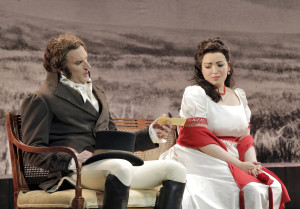 The musical delivery got off to a good start in Act I, with Ari Pelto conducting a reduced (and generally, but not always, in-tune) Kansas City Symphony in the pit: The peasant-chorus sounded splendid, and the vocal quartet of the four principal women (two hopeful youngsters, two jaded matrons) was carefully balanced and well-shaped. (Sadly this proved to be the only solo-voice ensemble for which this was the case.) The only jarring thing here was the palette of the “peasant” costumes, the variegated colors of which seemed to work against the gentle hues all around.
The musical delivery got off to a good start in Act I, with Ari Pelto conducting a reduced (and generally, but not always, in-tune) Kansas City Symphony in the pit: The peasant-chorus sounded splendid, and the vocal quartet of the four principal women (two hopeful youngsters, two jaded matrons) was carefully balanced and well-shaped. (Sadly this proved to be the only solo-voice ensemble for which this was the case.) The only jarring thing here was the palette of the “peasant” costumes, the variegated colors of which seemed to work against the gentle hues all around.
Setting aside Pushkin for a moment, this opera remains one of the most ingeniously structured works in the repertoire. Its symmetry proves for deeply satisfying moments, with the music providing subtle connections between Onegin’s Act I rejection of the young Tatyana and the mature Tatyana’s Act III “shoe-on-the-other-foot” rejection of the mature Onegin. In the central act, the betrayal of friendship in the duel pierces us as deeply as the bullet in poor Lensky’s chest. Jonathan Johnson, whose tenor had sounded a tad thin in Act I, pulled out the stops for his heart-rending “Kuda, kuda” aria: Voice and countenance conspired to convince us of both the ardor of his youthful love for Olga and the bewilderment of someone about to be shot by his best friend.
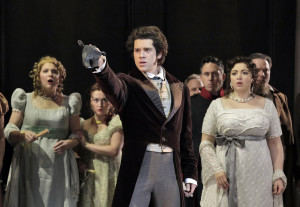 Morgan Smith has a powerfully rich baritone that sounded almost too “adult” for the young Onegin of Act I (but ideal for the older Onegin of Act III), while Raquel González’ thrilling soprano had a youthful zest that felt almost too smallish at the outset, but grew more full-spirited and knowing as the opera progressed (in keeping with the development of her character). Megan Marino as Olga sang with a lovely, creamy-rich mezzo: When she closed Tatyana’s book with a “snap” we knew she was the younger sister, even if her voice sounded a tad more mature.
Morgan Smith has a powerfully rich baritone that sounded almost too “adult” for the young Onegin of Act I (but ideal for the older Onegin of Act III), while Raquel González’ thrilling soprano had a youthful zest that felt almost too smallish at the outset, but grew more full-spirited and knowing as the opera progressed (in keeping with the development of her character). Megan Marino as Olga sang with a lovely, creamy-rich mezzo: When she closed Tatyana’s book with a “snap” we knew she was the younger sister, even if her voice sounded a tad more mature.
Although Onegin’s transformation to love-struck adolescent in the final act felt rather abrupt (as it often does), both Morgan and Raquel, under Tomer’s careful direction, acted the final scene with suitable ambiguity. What threw Act III for a loop was Paul Whelan’s Prince Gremin: He was such an appealing figure that his famous “Lyubvi vse vozrastï” aria, sung with a gorgeously inflected basso, made us feel that Tatyana had made quite a good choice. Instead of the dumpy dotard that Gremin is often made out to be, Paul was not just the tallest but perhaps the most appealing man onstage, and arguably the best actor. Even though Tatyana was indeed “settling,” she didn’t marry just for fame-and-fortune after all: Gremin is a decent guy, and actually not that bad-looking!
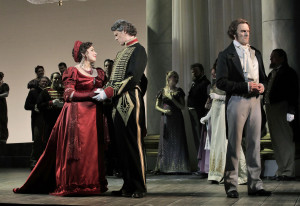 The production was filled with directorial delights. The visual placement of the leads (in a sort of x-shape) during Steven Cole’s sweetly delivered “Name-Day Song” in Act II was such that Triquet at center stage was blocking the two pairs of lovers from approaching (or even seeing) each other: Yet we felt the kinetic tension as Tatyana watched Onegin with quizzical alarm, and Lensky seemed to want to rush over to Olga but was held back by the courtly conventions of the situation. And the addition of older, identically dressed “stand-ins” for Onegin and Tatyana was a clever touch: At key moments of the drama they watched their younger counterparts with sadness, wishing they had “known then what I know now.” (Would it have made a difference, one wonders?)
The production was filled with directorial delights. The visual placement of the leads (in a sort of x-shape) during Steven Cole’s sweetly delivered “Name-Day Song” in Act II was such that Triquet at center stage was blocking the two pairs of lovers from approaching (or even seeing) each other: Yet we felt the kinetic tension as Tatyana watched Onegin with quizzical alarm, and Lensky seemed to want to rush over to Olga but was held back by the courtly conventions of the situation. And the addition of older, identically dressed “stand-ins” for Onegin and Tatyana was a clever touch: At key moments of the drama they watched their younger counterparts with sadness, wishing they had “known then what I know now.” (Would it have made a difference, one wonders?)
The set designs also included lavish pillars and chandeliers the likes of which the Lyric rarely sees, as well as unusually
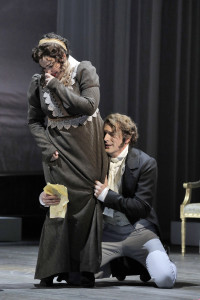
imposing birches and a constant shifting of translucent light as day turns to night and vice versa. But mostly it was the shimmering abstract “vision,” for which Rom and Wierzel are justly famous, that exerted an impact. The cast sang uniformly well: Among the smaller roles Jan Bunnell was strikingly effective in her brief moments as Filipyevna, and Alice Chung was a well-tempered if perhaps young-looking Madame Larina. Regrettable moments: the imbalance of mismatched voices in the Act I quartet of the lovers (in which Tatyana and Onegin overpowered the other two), and the critical Act II quintet with chorus, in which the singers struggled rather chaotically to be heard over the orchestra.
Moreover there were perhaps a couple too many “freeze moments” (in which the crowd stops dancing, the lighting shifts, and one or two characters take the scene). These are fine the first couple of times but after the third or fourth time they start to feel like an affectation. On the plus side, choreographer Logan Pachciarz’ dance scenes throughout struck a fine balance between the elegance of aristocratic dance and the earthy folk steps that were doubtless a part of courtly life.
Eugene Onegin runs through October 8th at the Kauffman Center. Call 816-471-7344 or go to kcopera.org.
To reach Paul Horsley, performing arts editor, send email to paul@kcindependent.com or find him on Facebook (paul.horsley.501) or Twitter (@phorsleycritic).
All photos by Cory Weaver / Courtesy of Lyric Opera of Kansas City.
Features
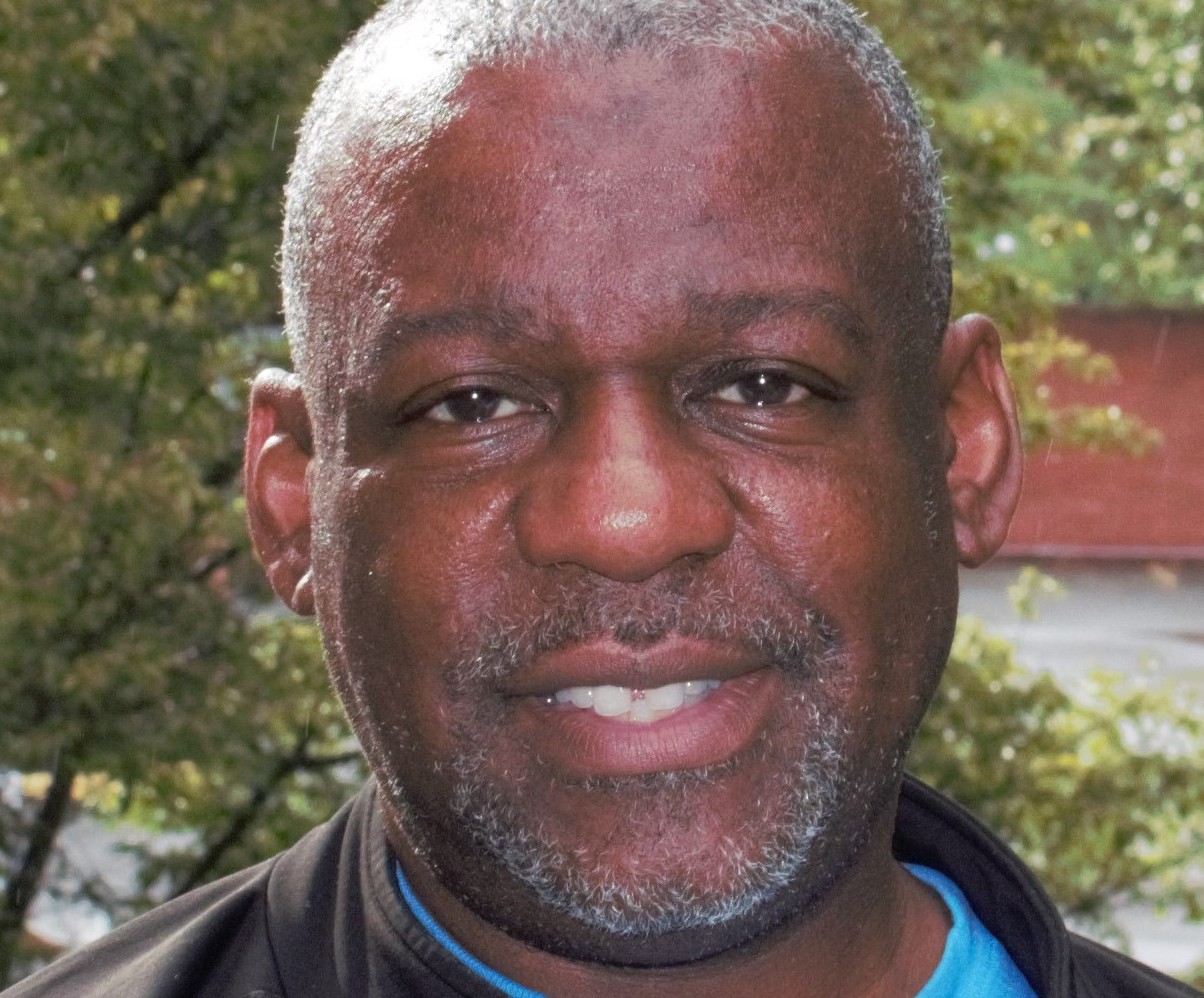
Tyrone Aiken danced prodigiously as a youth, trained at The Ailey School as a young adult, worked as a professional dancer at the height of the New York dance ferment,…
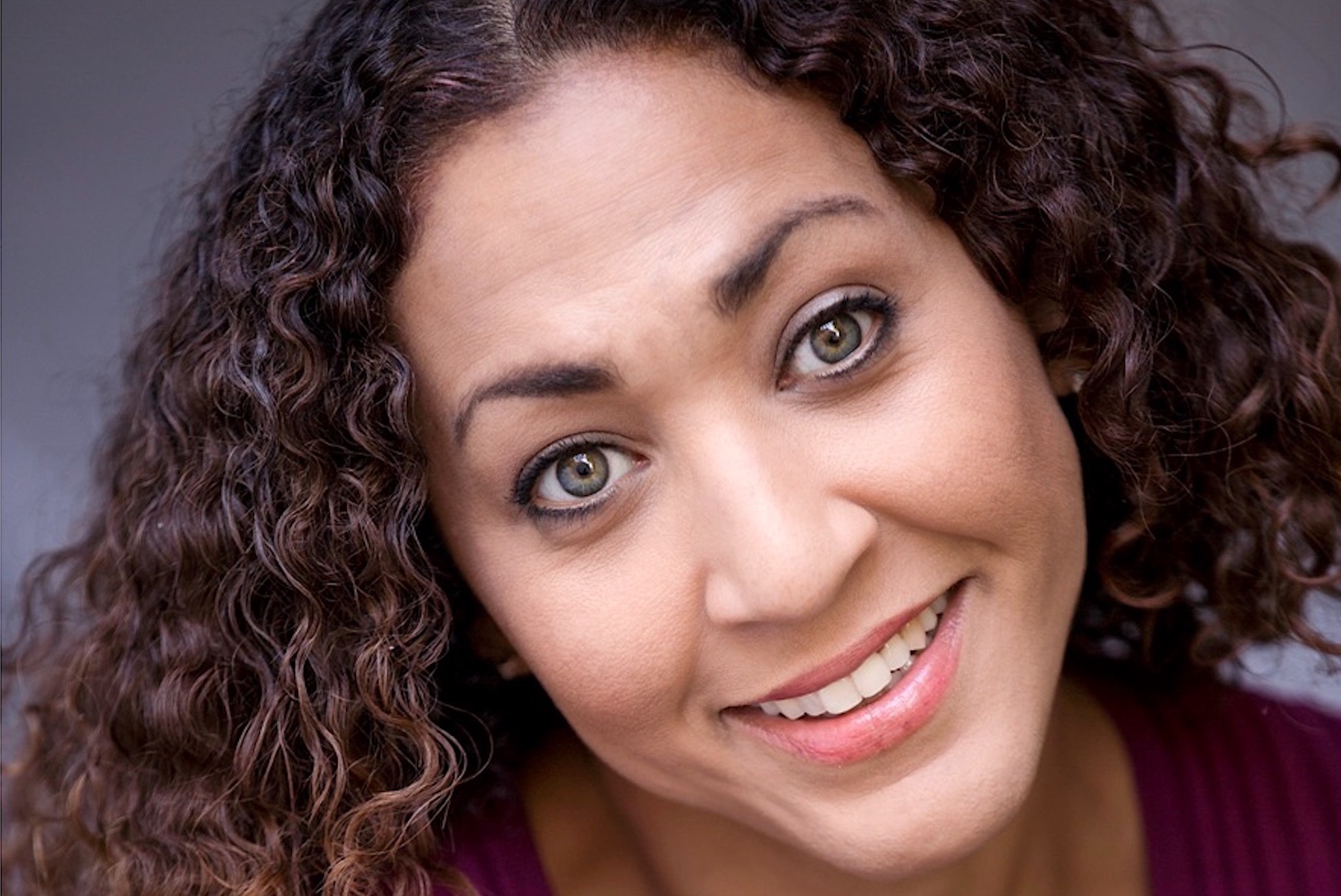
CAROLINE DAHM Dancer, choreographer, producer, master teacher, adjunct dance professor at The UMKC Conservatory, assistant director at Wylliams/Henry Contemporary Dance Company What I love about the Kansas City performing-arts scene: Kansas…
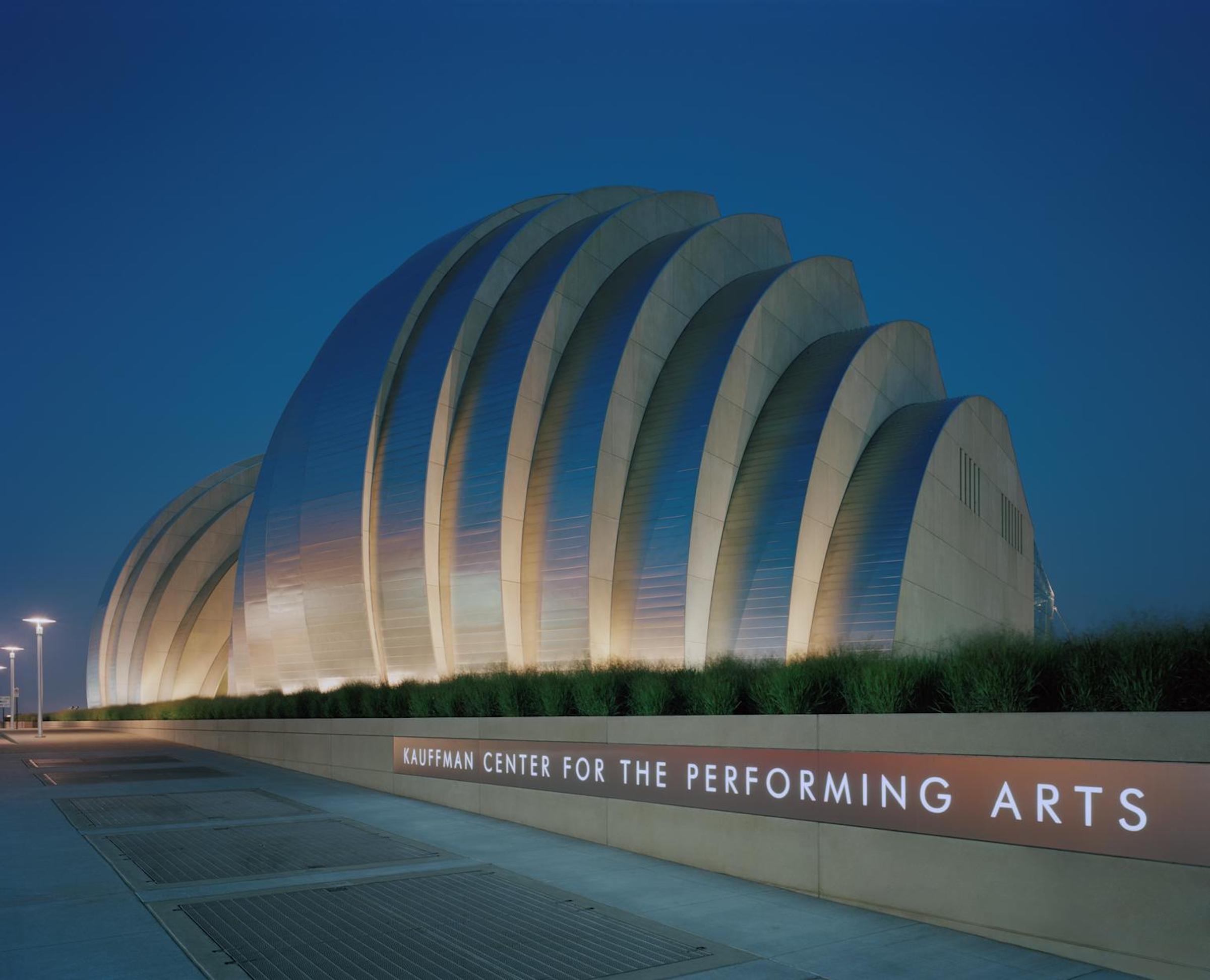
It’s difficult to remember what the Kansas City skyline looked like 20 years ago, before the Kauffman Center for the Performing Arts began to take shape at 16th and Broadway.…







